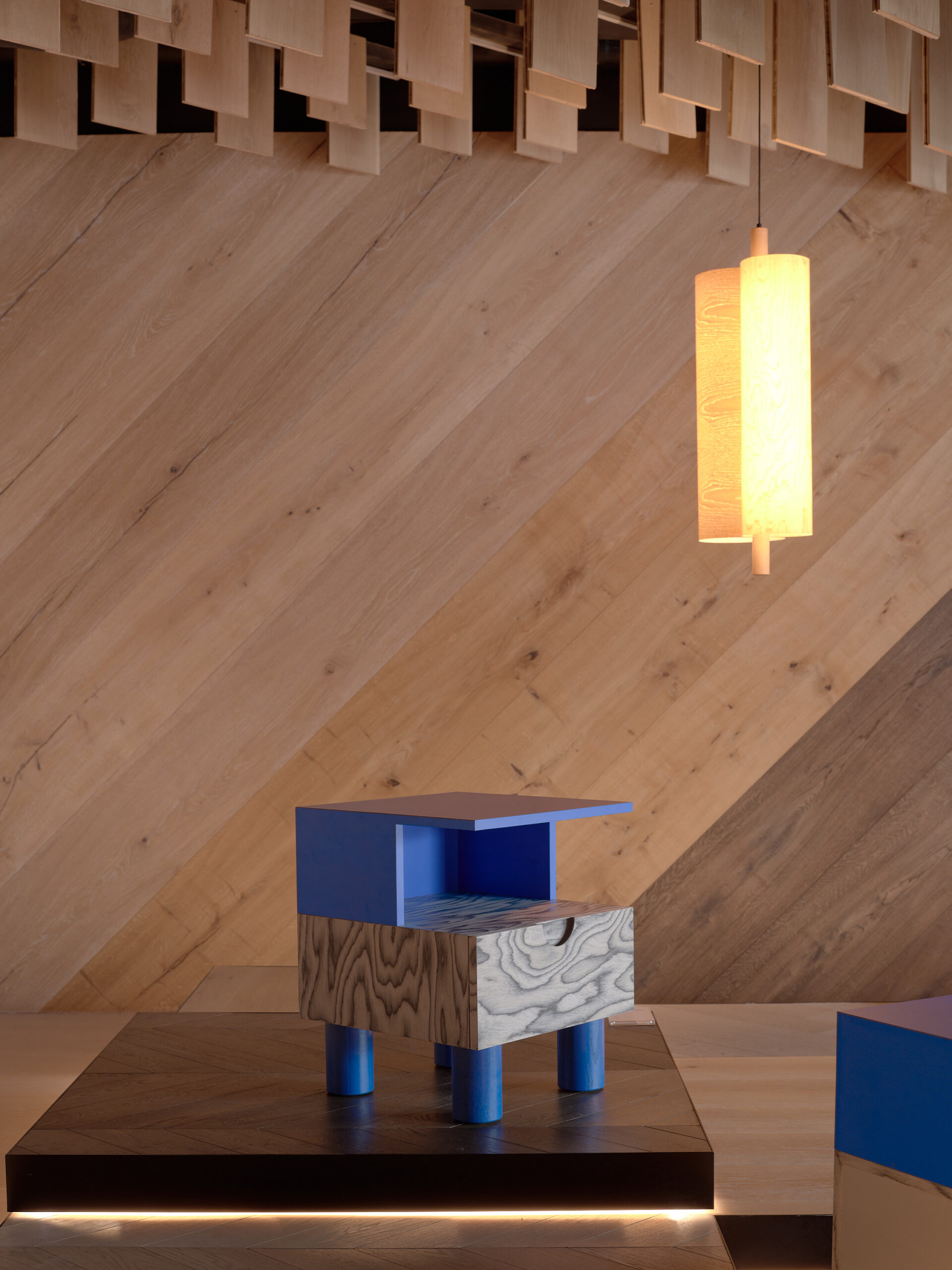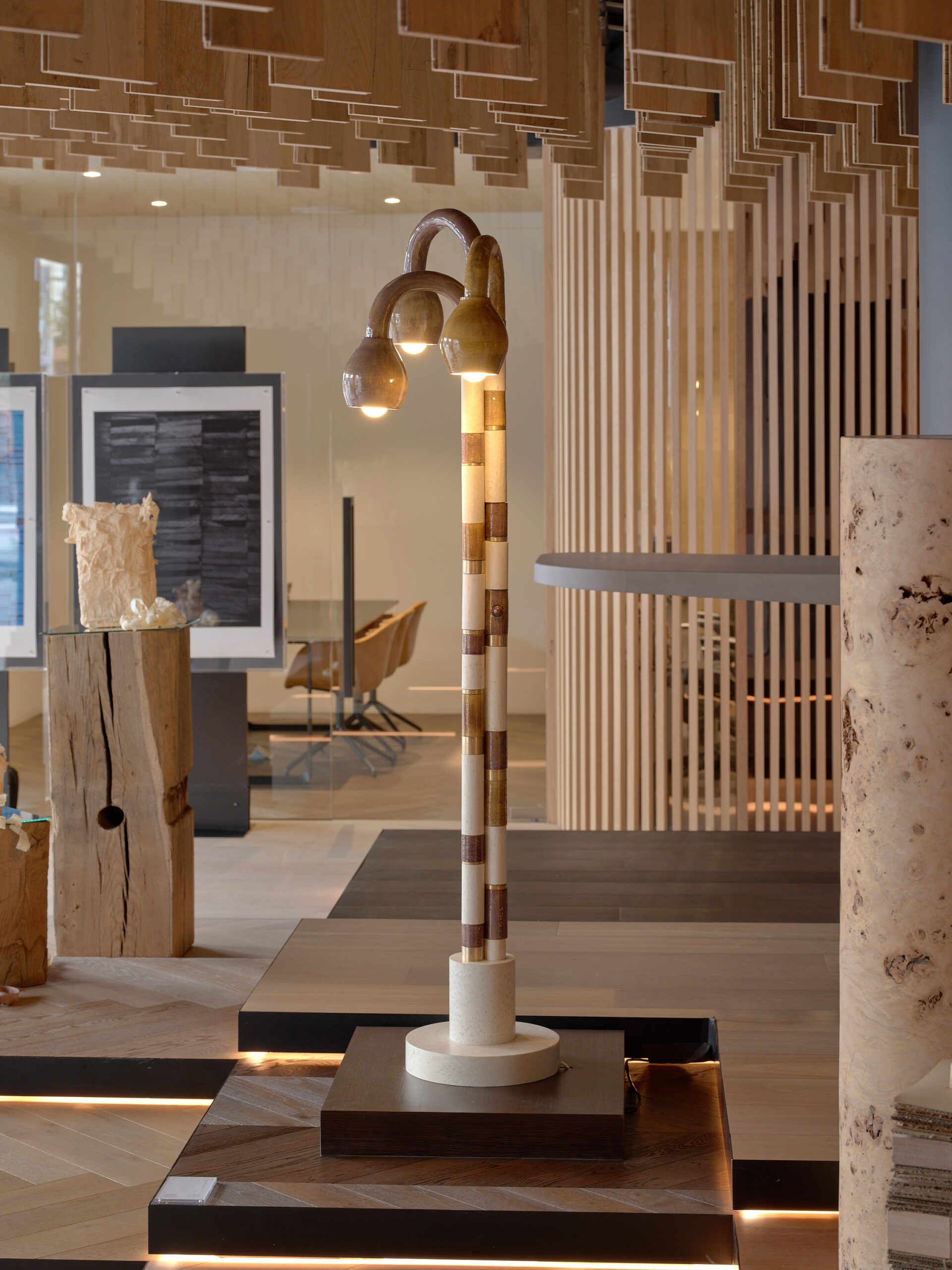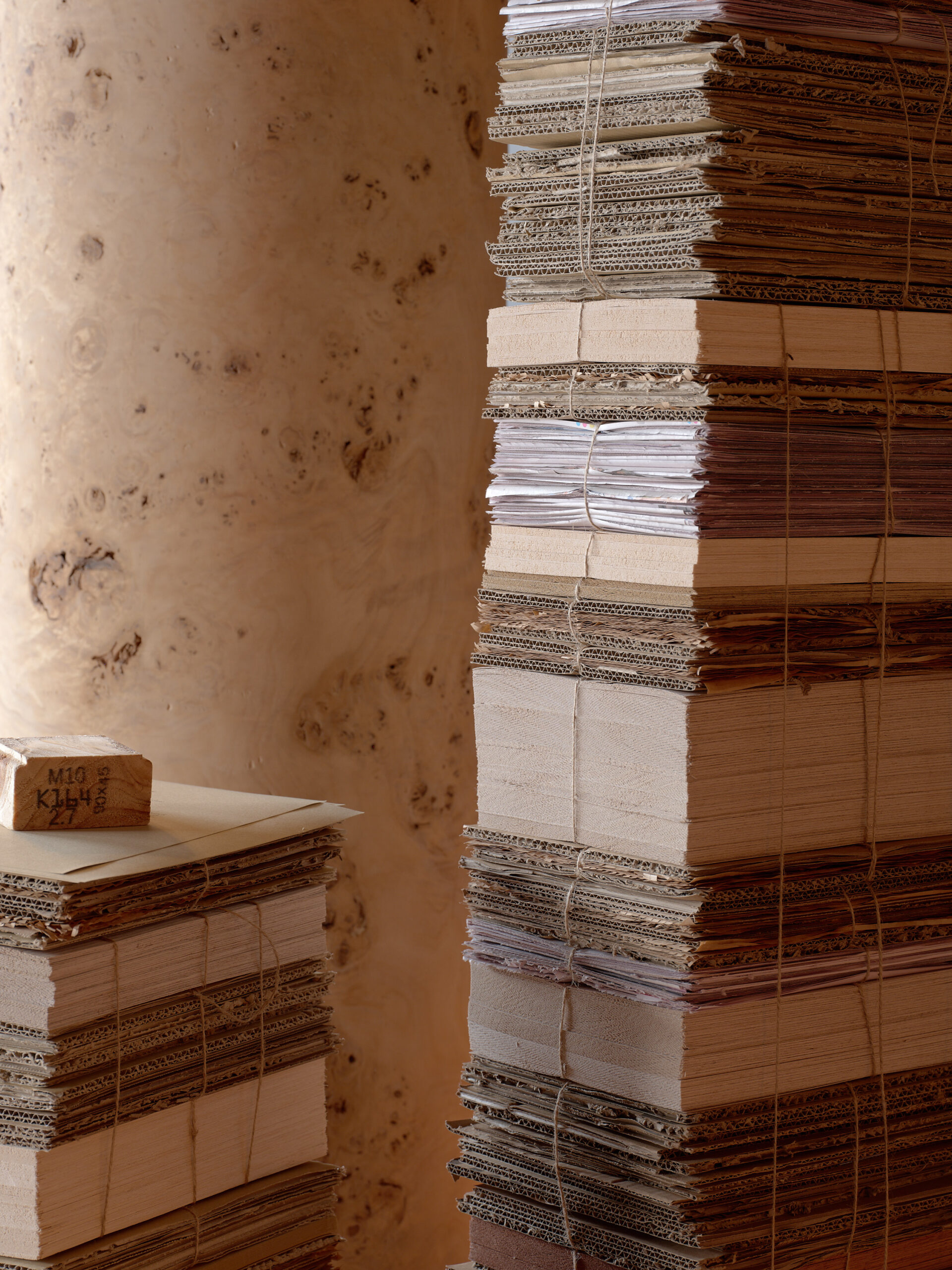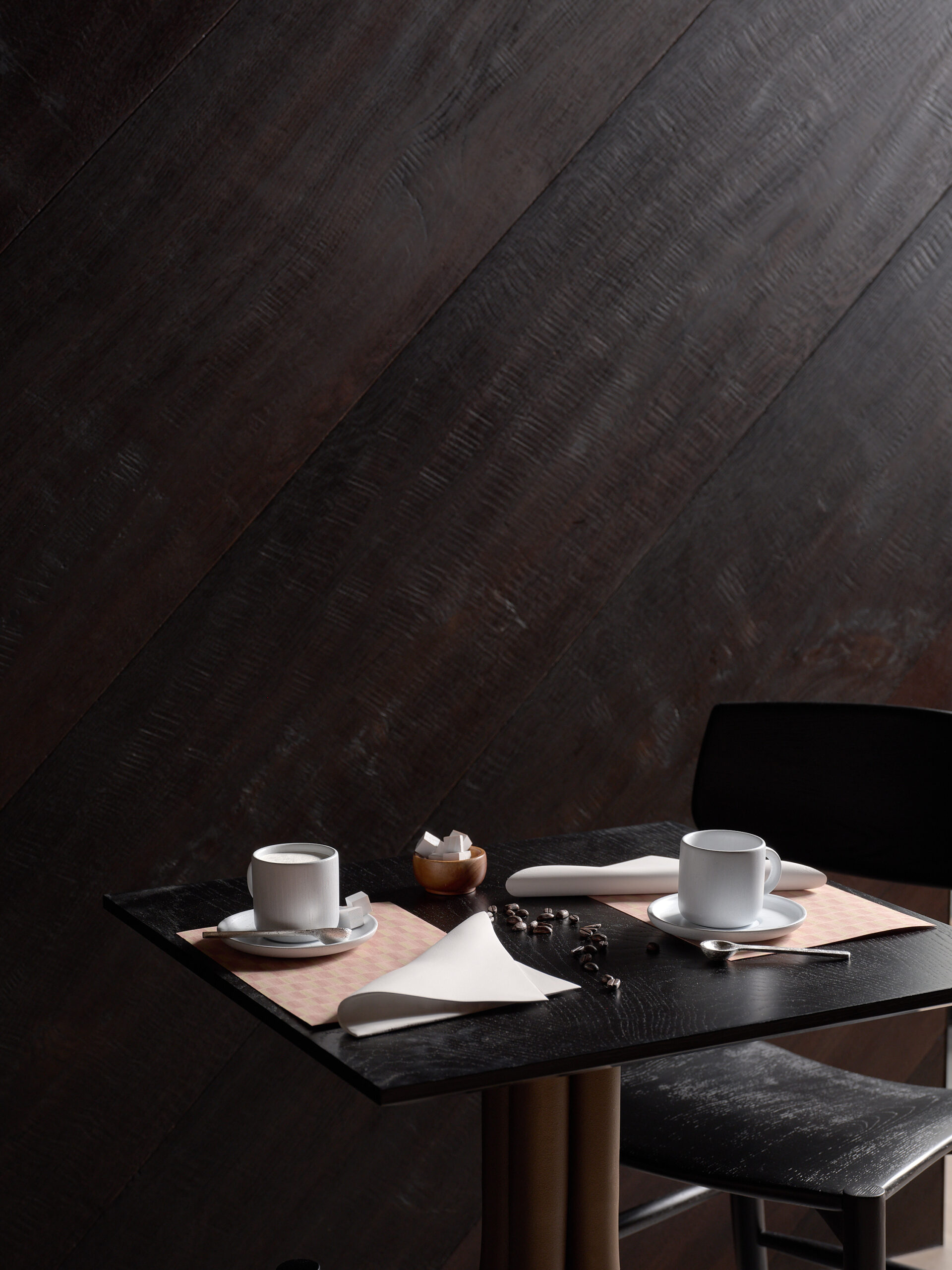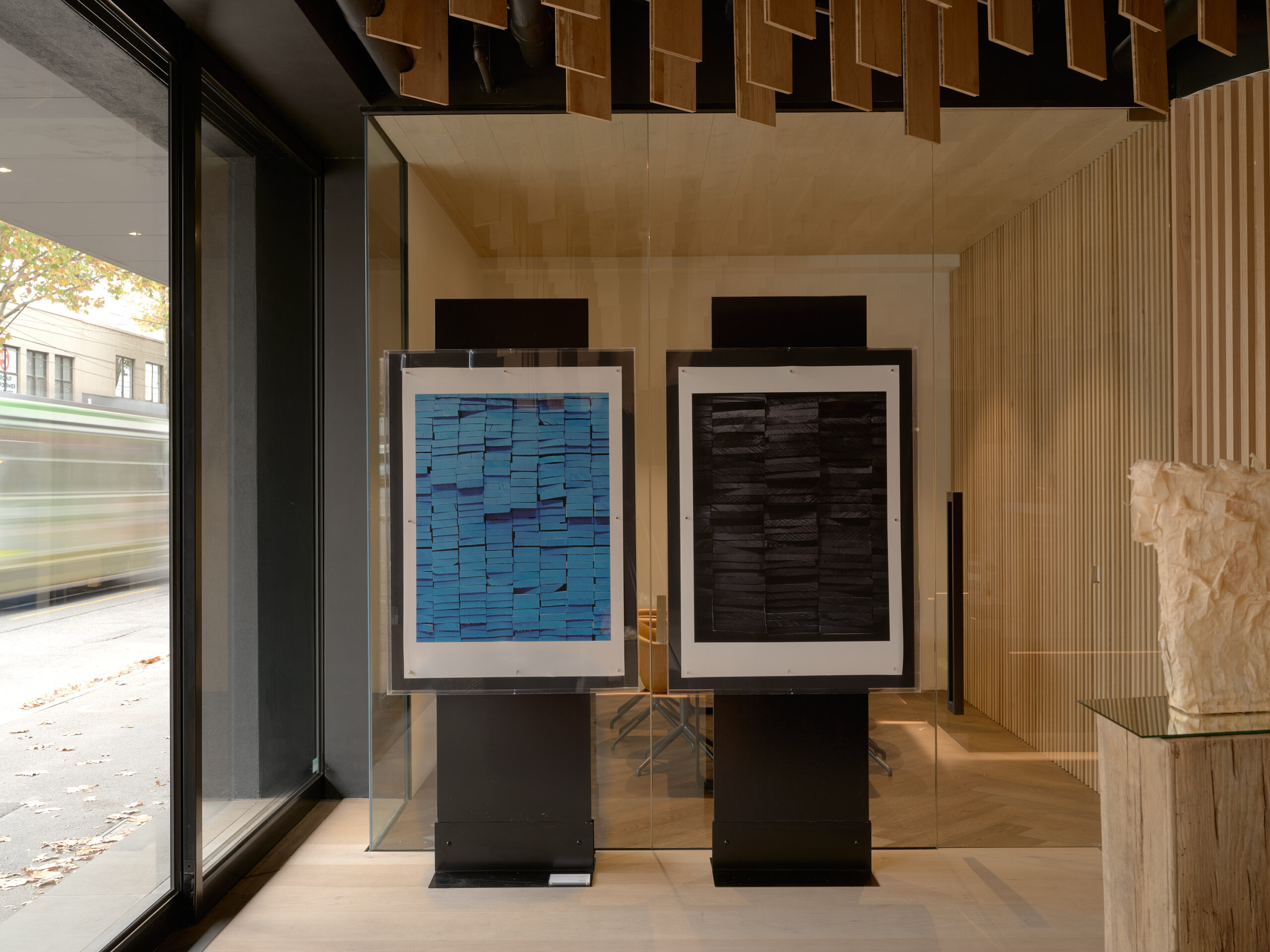Lesley Lokko's 18th International Architecture Exhibition - La Biennale di Venezia realises moments of meaningful change in an expansive exhibition...
Elton Group and Tongue & Groove present 'The Hands That Touch the Timber' for Melbourne Design Week
For Melbourne Design Week, Elton Group and Tongue & Groove will present The Hands That Touch the Timber, an exhibition exploring the beauty, tactility and sustainability of timber. In preparation for the panel, featured designers Bolaji Teniola, Drew Abrahamson, Ross Didier, and Edward Linacre were asked to share their thoughts on materiality and timber, and to define what constitutes ‘good’ design.
Essay
Rachel Weinberg
Photography
Adam O'Sullivan
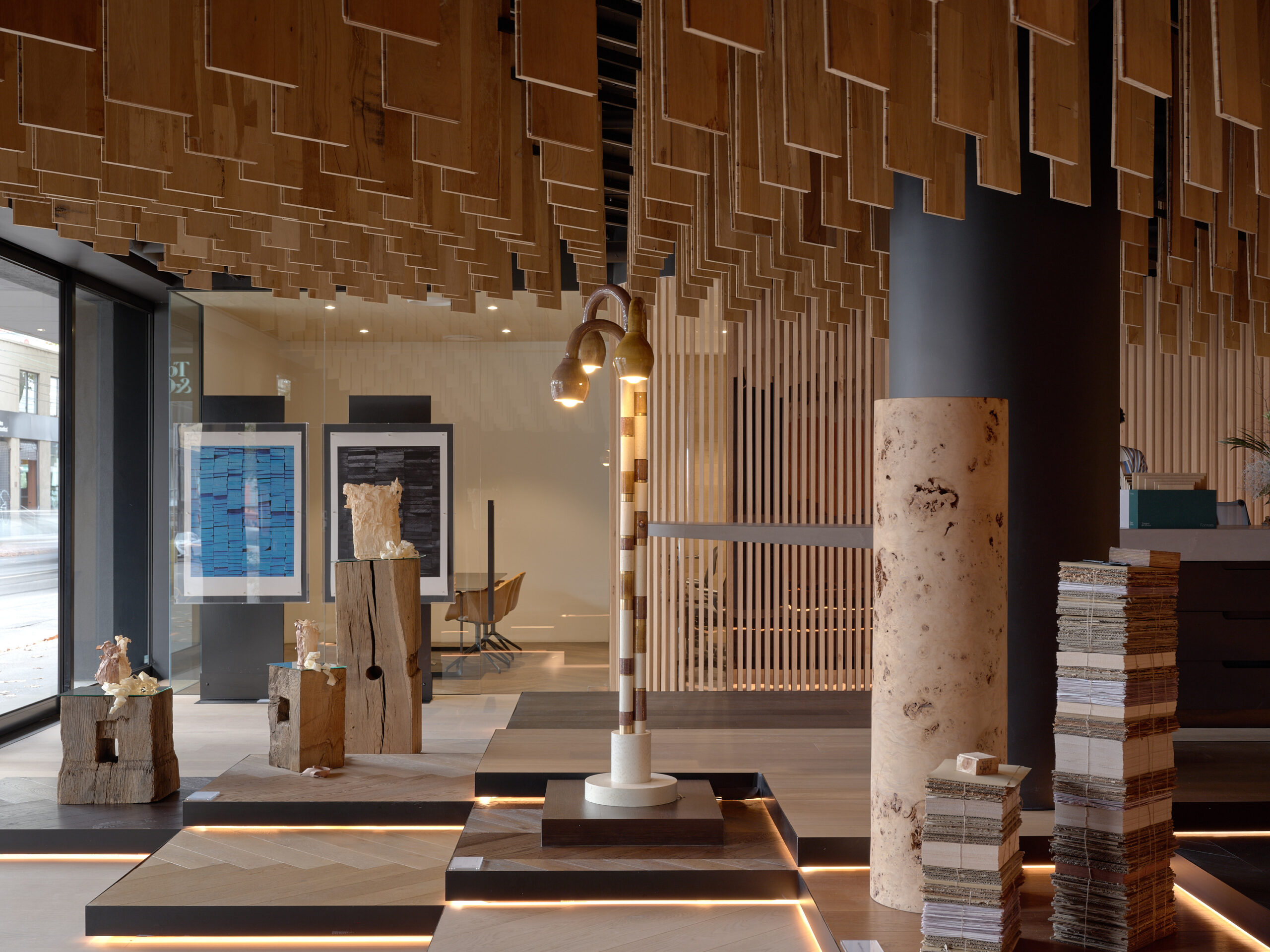
Photo: Adam O'Sullivan
Bolaji Teniola
Bolaji Teniola is an emerging interdisciplinary designer who blends his knowledge of furniture and industrial design to create innovative pieces. He values pragmatic solutions and delights in allowing the process to shape the outcome. Teniola holds an Associate Degree in Furniture Design and a Bachelor of Industrial Design from RMIT University. He has gained experience working at prominent furniture design studios in the Netherlands and Indonesia.
How would you describe your work?
My work for ‘Touchwood: The Hands that Touch the Timber’ is an expansion of my exploration of timber shavings. Using hand-made rudimentary forms and found objects as moulds, I’ve created objects that attempt to mimic everyday items such as vases and bottles while allowing the timber shavings to maintain their character. The unpredictability of the shavings coiling and unfolding makes each piece bespoke and takes on a form slightly removed from its reference. The untreated pine and walnut's warm hues, along with their highly textural surface, create an effect that distorts our perception of the material as we view it from various angles.
In what ways does materiality influence your practice?
A curiosity for materials, textures and manufacturing processes plays a big role in my practice. The more I learn, the more I’m inspired to try different things, which leads to fun and exciting outcomes. The Timber Shaving Vessels I made for a Misc Objet design week back in 2022 are a good example. Usually, I follow a linear design development process: sketch, CAD, prototype, etc. However, with the vessels in this exhibition, I wondered what else I could do with timber shavings, besides discarding them or using them for fire kindling. Once I got my hands on the material, I went straight to making because I felt that was the best way to develop my ideas. Utilising timber shavings through a craft process allowed me to create intriguing forms and investigate the potential viability of this otherwise discarded material.
Why do you choose to use timber?
I enjoy experimenting and working with many materials and do my best to branch out where possible, but I always seem to find my way back to timber to prototype, make jigs and tools, or create a final piece. I enjoy learning about the various species of timber and the tools and construction techniques you can use with it. No matter how much I learn, do, or see, I always encounter a different approach to making with timber.
How do you define ‘good’ design?
Dieter Rams best defined design with his ten principles. Still, I believe that good design is timeless and carries an essence that may transcend its initial use, function, or concept and enter the cultural zeitgeist. It doesn’t need to stand out to do this and isn’t limited to any particular design movement or era. Good design can be a quiet achiever, like a standard pencil.
Drew Abrahamson
Adelaide-born, Melbourne-based designer Drew Abrahamson draws inspiration from Earth's wonders and urban hedonism. As a self-taught designer, he embraces asymmetrical chaos, blending natural elements with modern modes. With a background in illustration, sculpture, landscaping and carpentry, Drew’s practice sees him explore various mediums without restraint.
How would you describe your work?
I like to refer to my skillset as a mutt, a mongrel of methods and practices, but those who have been on this creative journey with me since the beginning say otherwise. My work is a clear progression of new explorations and my various trainings in related and unrelated disciplines.
In no world would I be considered a minimalist. I barely consider myself a designer, more so an artist that operates primarily within the design landscape. Present in my work is always a cheeky, playful nod. I endeavour to tell stories, a portrayal or allusion to another world of some kind, of another existence.
In what ways does materiality influence your practice?
Any influence materiality has on my work is born out of pure curiosity. I have become acquainted with many mediums through my time working in construction. Outside of these interludes of working in different fields, I conduct all my own research around materials. I try to understand and deconstruct to build back up again.
Why do you choose to incorporate timber?
While I don’t exclusively work with timber, it is definitely a constant material throughout my practice. I always seem to come back to it. I am less interested in being a ‘fine woodworker’ and more interested in the vast, seemingly endless possibilities of timber. It is incredibly malleable yet hardy; it is a material I find incredibly exciting.
How do you define ‘good’ design?
Defining good design is a lot like asking the definition of good art. There are problems immediately with the designation of ‘good’. To me, it is just too subjective but for me personally, good design expresses a feeling; it brings an individual a sense of pride for their home and for the nest they have formed. I want a space to embody its occupant so acutely that you feel you know them before meeting them physically. I am sure there is a blueprint to good design out there somewhere, but I don’t know what it is.
Ross Didier
The Didier Design Studio is one of Australia’s most dynamic and diverse design studios, boasting a 30-year legacy of work. Ross Didier, the creative force behind the studio, articulates the nuanced relationship between art and design by acknowledging and embracing the distinct purposes and constraints of both disciplines. He notes that while good art communicates ideas freely, good design serves a function.
How would you describe your work?
Idea eclectic. Furniture is, for me, the closest form of functional sculpture. It directly relates to the human body.
In what ways does materiality influence your practice?
I love storytelling and materials help articulate a narrative. I enjoy each material having inherent cultural symbolism: brutal materials like concrete and base metals can tell the truth, upholstery fabrics can make the ambience surreal, custom castings can add poetic details, and timber can suggest handmade craftsmanship. Though these material stereotypes can be creatively redefined.
Why do you choose to use timber?
Timber is sensual, individual and natural. It can be worked on with so many techniques, then left raw or manipulated in endless ways.
How do you define ‘good’ design?
Good design is emotionally engaging, it stimulates the senses to somehow transport you and make you feel good.
When something attracts you emotionally,, it makes you want to use it, and this creates a phenomenal experience.
Edward Linacre
Edward Linacre is an industrial designer, artist and maker known for his pioneering work with sustainable materials. His portfolio explores human experiences through light, form and material manipulation. His Melbourne-based studio produces award-winning lighting, furniture and bespoke artworks.
How would you describe your work?
Light, material, form, geometry. They are my mediums. I’m bloody obsessed. At any scale, I love it. Natural materials, biomaterials, recycled materials, and the interaction of light through these mediums. Just plain obsessed.
In what ways does materiality influence your practice?
I don’t really have a choice; I’m on a mission. I am a material nerd. It's quite unhealthy, my obsession with light and materiality. I am highly visually stimulated, and I want everyone to experience the pleasure I do. The world is digitally out of control. Tangibility, touch, feel, experience. Materials are vital to me feeling human.
Why do you choose to use timber?
I have been working with Elton Timbers for a decade on my lighting designs and sculptures, illuminating timber, highlighting the grain, the flexibility of veneer, and contorting into a variety of shapes. It’s been a journey and a wonderful collaboration that is culminating in this new lighting piece. We have been prototyping and developing the application of this new material for years. They are the material experts and I bring the light. I am very excited to launch this collaboration. With this latest material, we can finally illuminate the grain of timber and show the organic unpredictability and unplanned beauty.
How do you define ‘good’ design?
Good design must be more than functional; it is a complete necessity to be sustainable, to adhere to lifecycle design principles, and to consider every element of its creation and its effect on our planet and its inhabitants. We have approached this new product with the complete journey in mind, from the material source through to space-saving shipping. With veneer, you can take up a huge amount of space with a minimum amount of material usage. The trick is to ship that with as little volume as possible. Elton being FSC-grade is very important. To be able to celebrate the material responsibly is a necessity.
